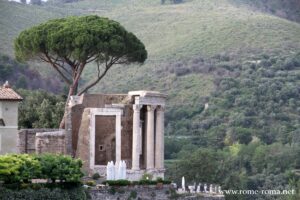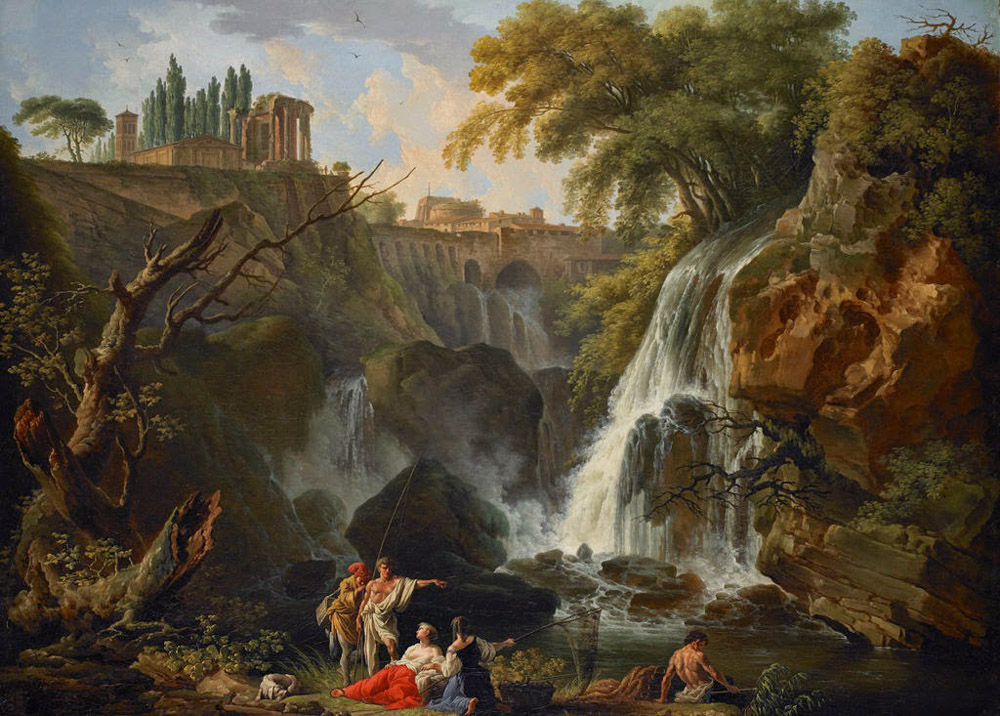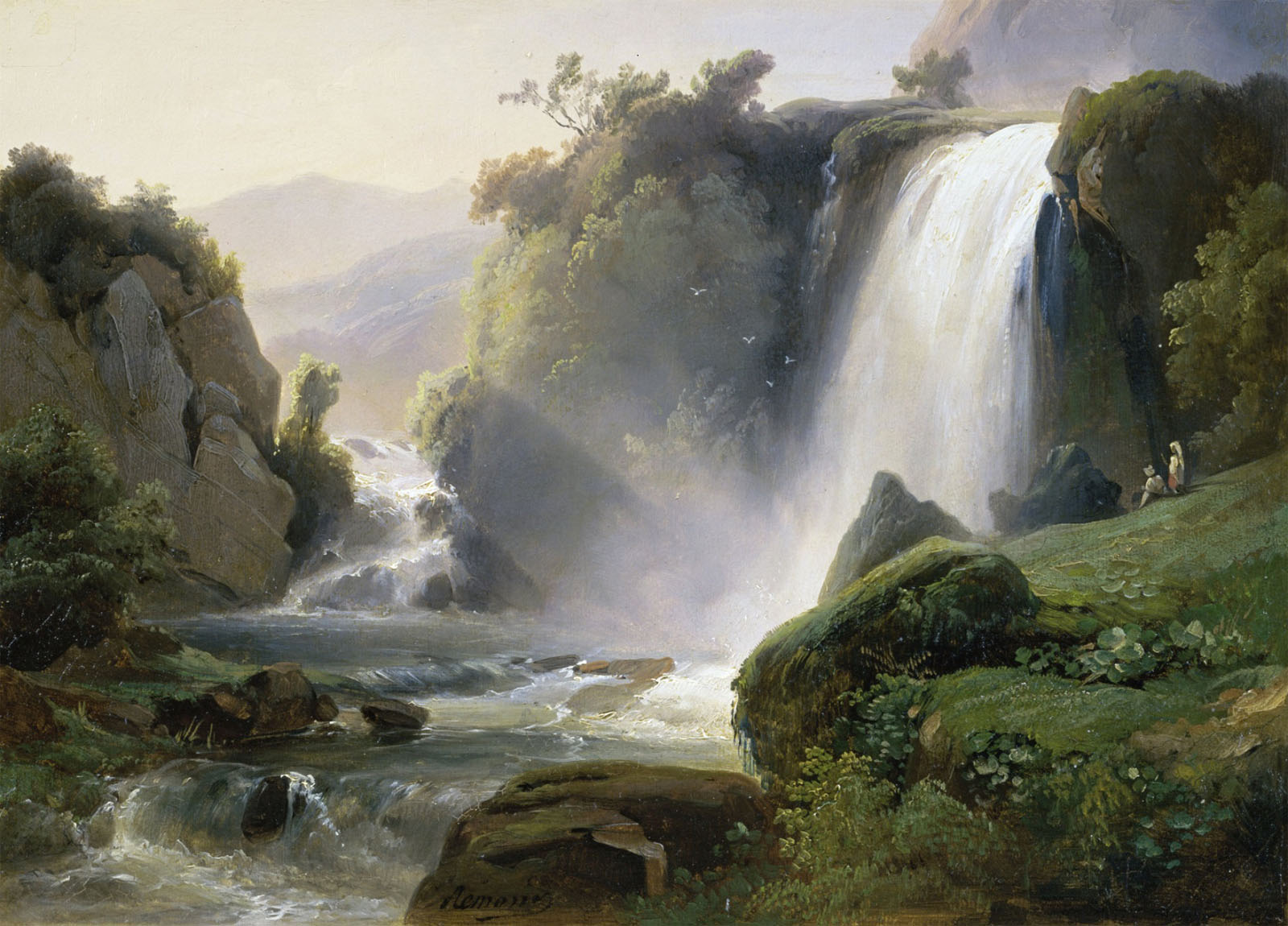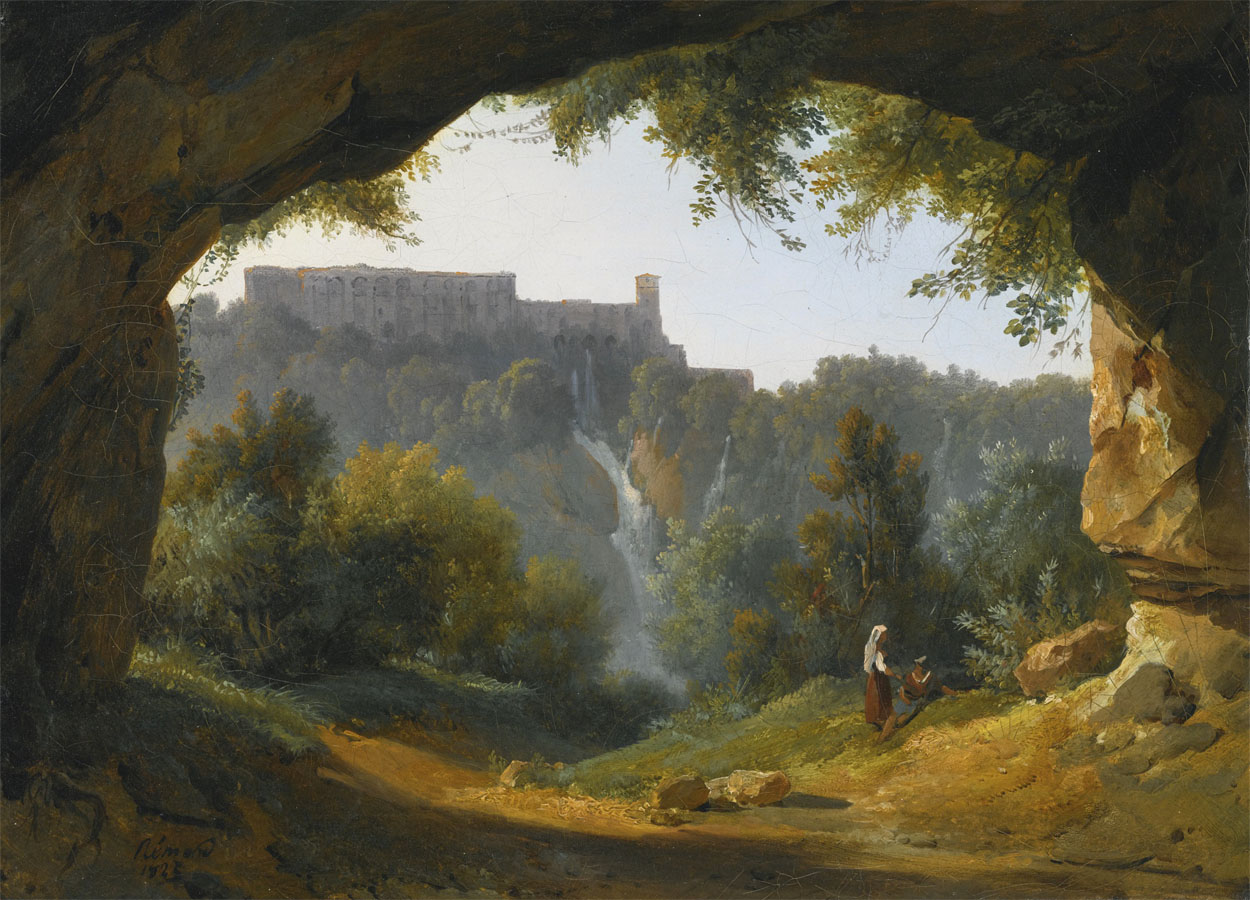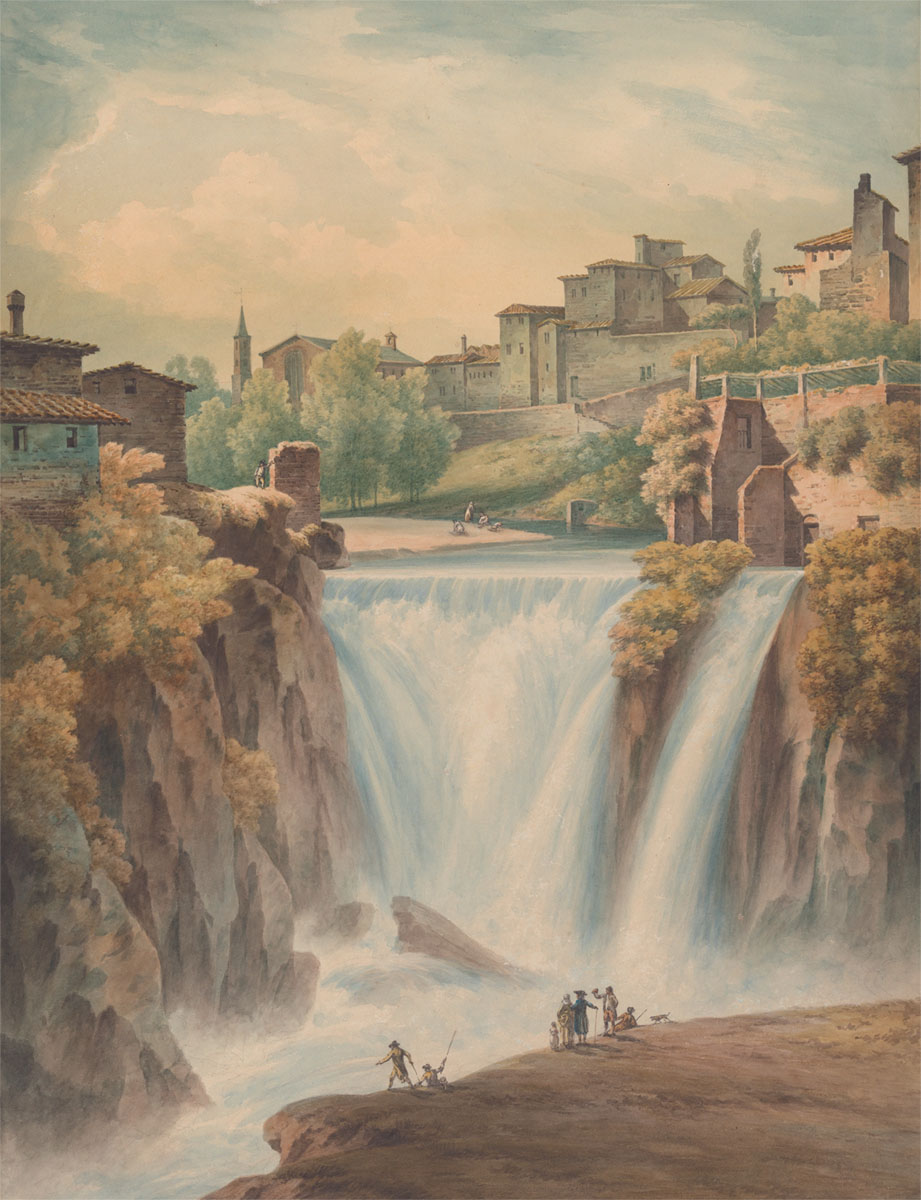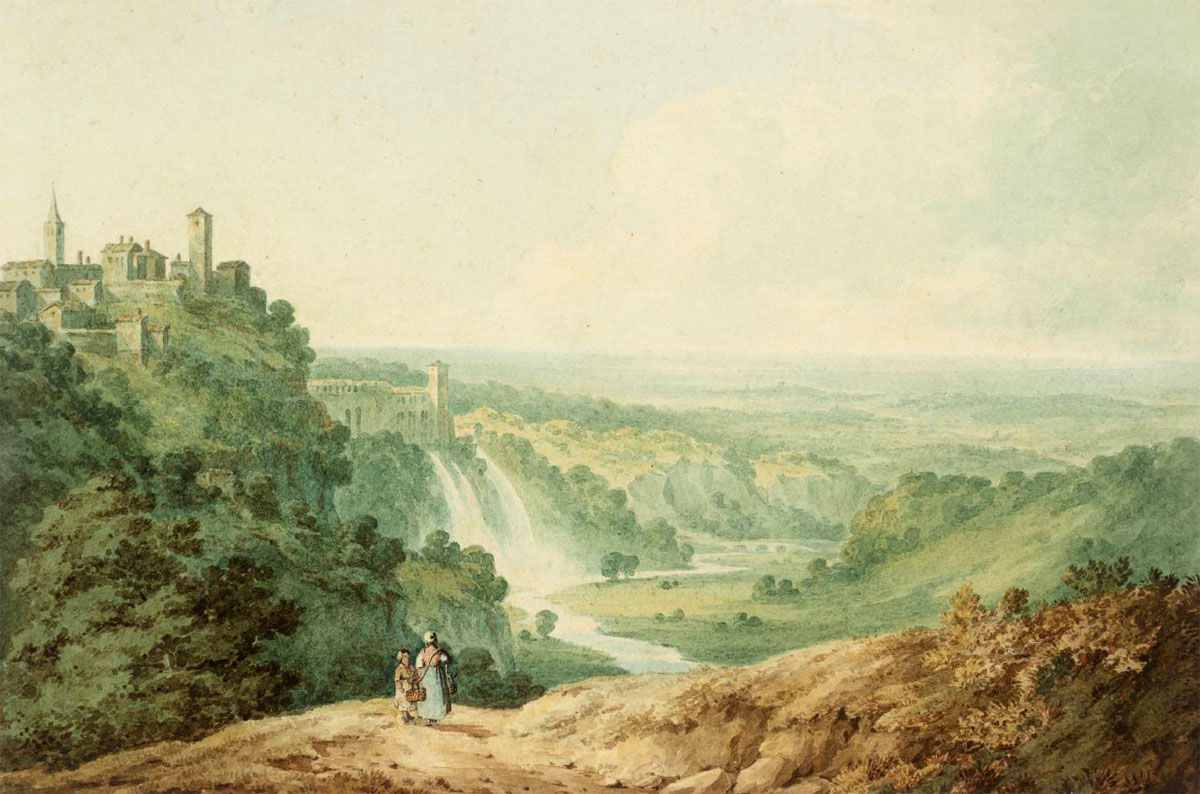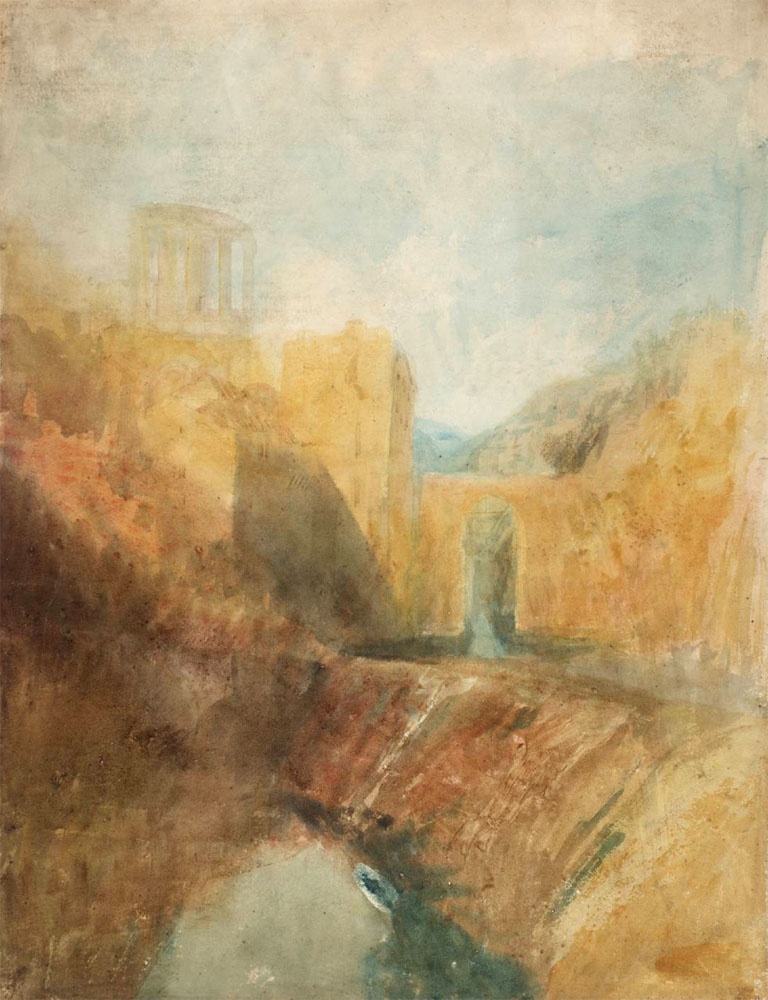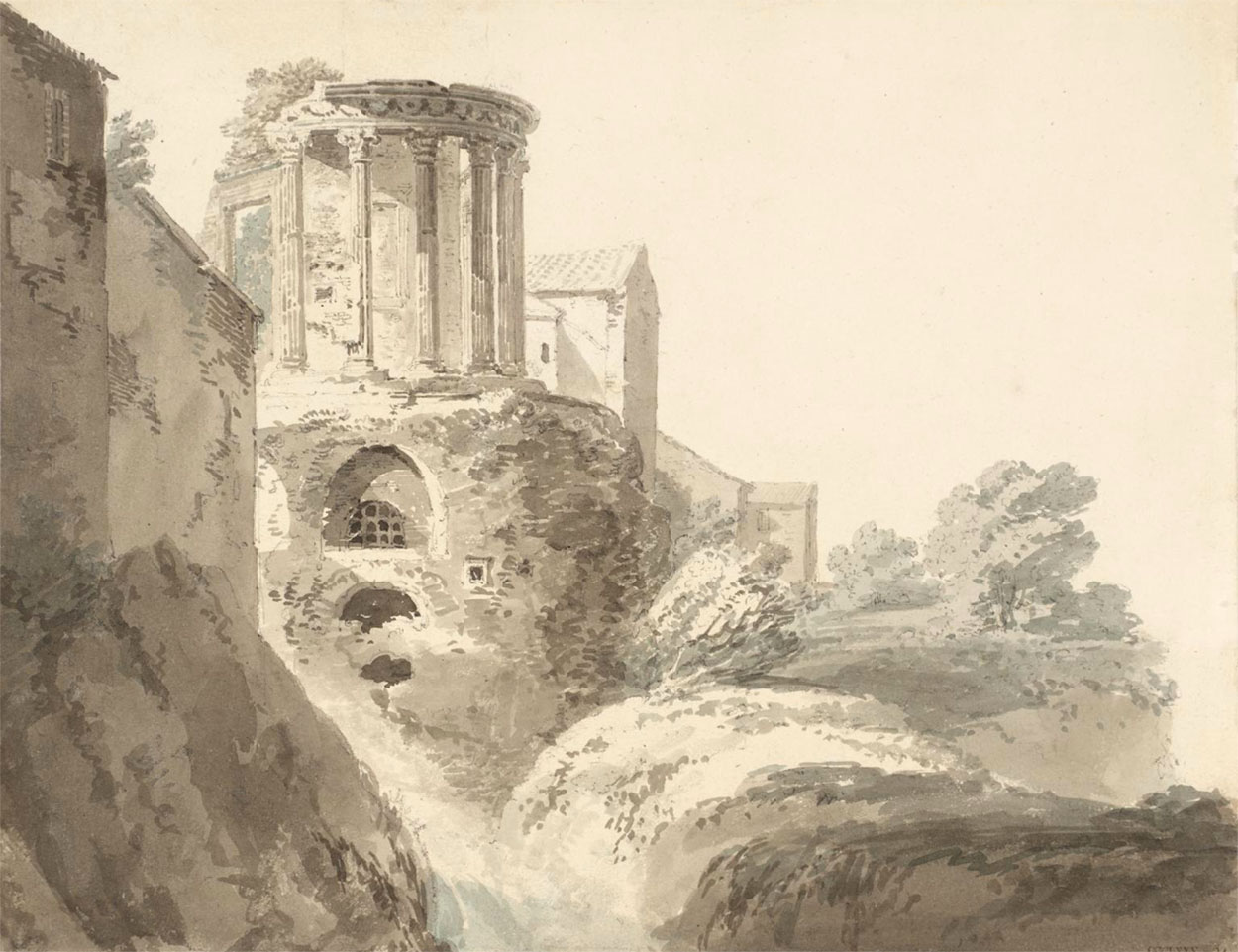Tivoli, less than 30 km from Rome, is a small town renowned for its heritage with its UNESCO World Heritage sites: the Villa d’Este with its splendid Renaissance gardens, and the Hadrian’s Villa, the sumptuous ancient imperial residence.
The historic center is another attraction of Tivoli, as well as the park and waterfalls of the Aniene at the Villa Gregoriana.
It’s a pleasant destination for a getaway from Rome, where Romans often come for a visit on weekends.
Historical elements
The Latin town of Tibur developed in the archaic period (7th–6th century BCE), on the left bank of the Aniene, at the foot of the Lucretili Mountains.
The Sanctuary of Hercules Victor is one of the oldest testimonies.
In the Roman era, Tivoli was already favored by the aristocracy after the construction of Hadrian’s Villa.
What to see in Tivoli
UNESCO Sites in Tivoli
This weekend destination for Romans is first famous for its UNESCO-listed heritage already mentioned: on one hand, the vast Roman remains of the sumptuous and extensive Hadrian’s Villa, and on the other, the splendid Villa d’Este with its magnificent gardens and spectacular fountains.
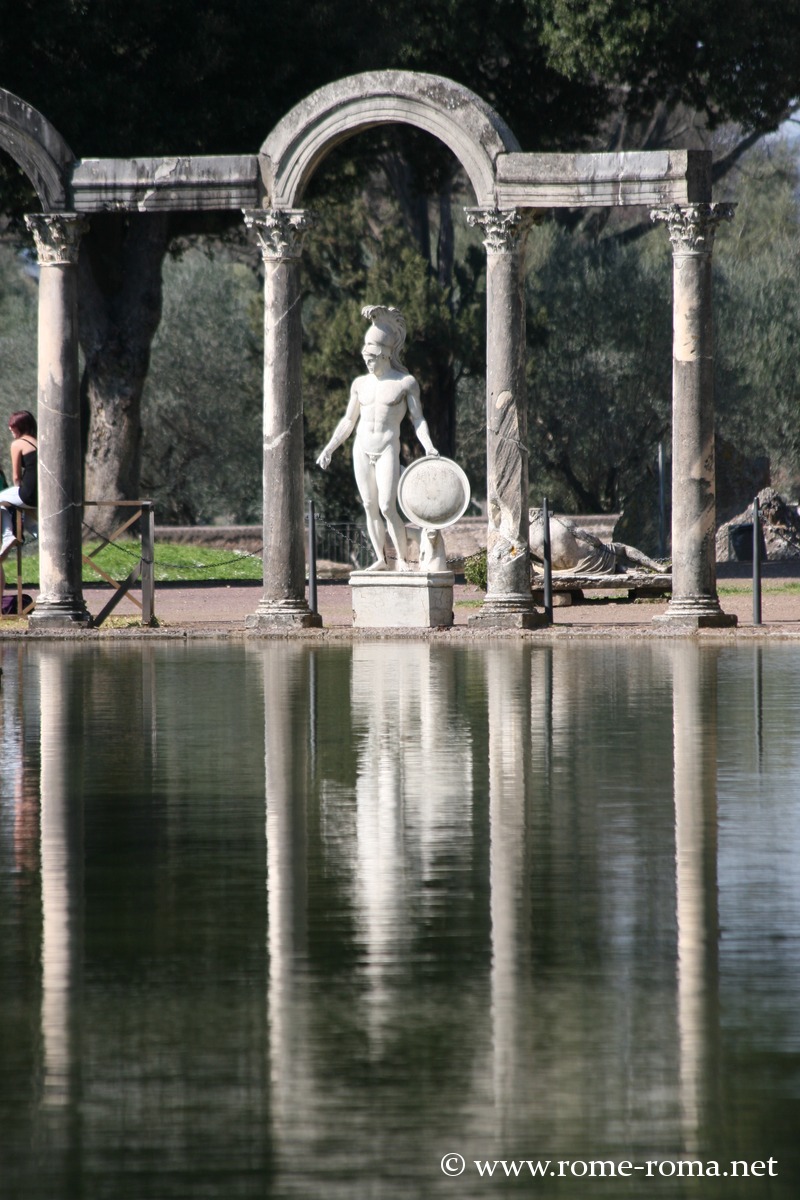
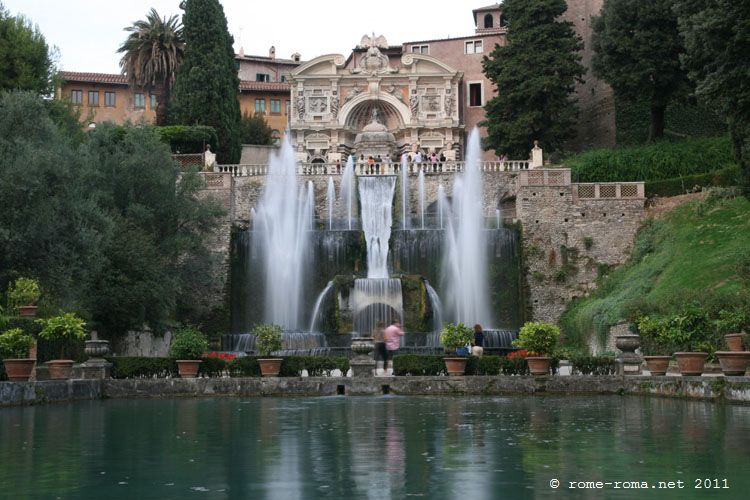
Historic centre of Tivoli
Adjacent to the historic centre, a verdant valley is formed by the park of the Villa Gregoriana, with waterfall, caves and some ruins.
The historic centre retains interesting buildings, such as the church of Santa Maria Maggiore and the cathedral of San Lorenzo. Near the latter, the Mensa Ponderaria, recently opened to the public, and which stood on the Roman forum, was the office for weights and measures control. From the Via della Sibilla one can discover the evocative remains of the Temples of Vesta and the Sibyl overlooking the valley. One has a superb view of these temples from the picturesque Ponte Gregoriano, in travertine with a single arch.
Mention should also be made of the 13th-century church of San Biagio, San Pietro alla Carità in Romanesque style, and the 12th-century church of San Silvestro. Outside the historic centre, the sanctuary of the Madonna di Quintiliolo preserves a 13th-century icon.
A source of sulphurous waters also supplies the modern thermal baths of Acque Albule, at Tivoli Terme.
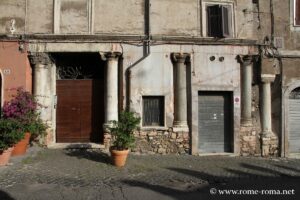
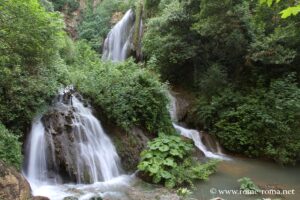
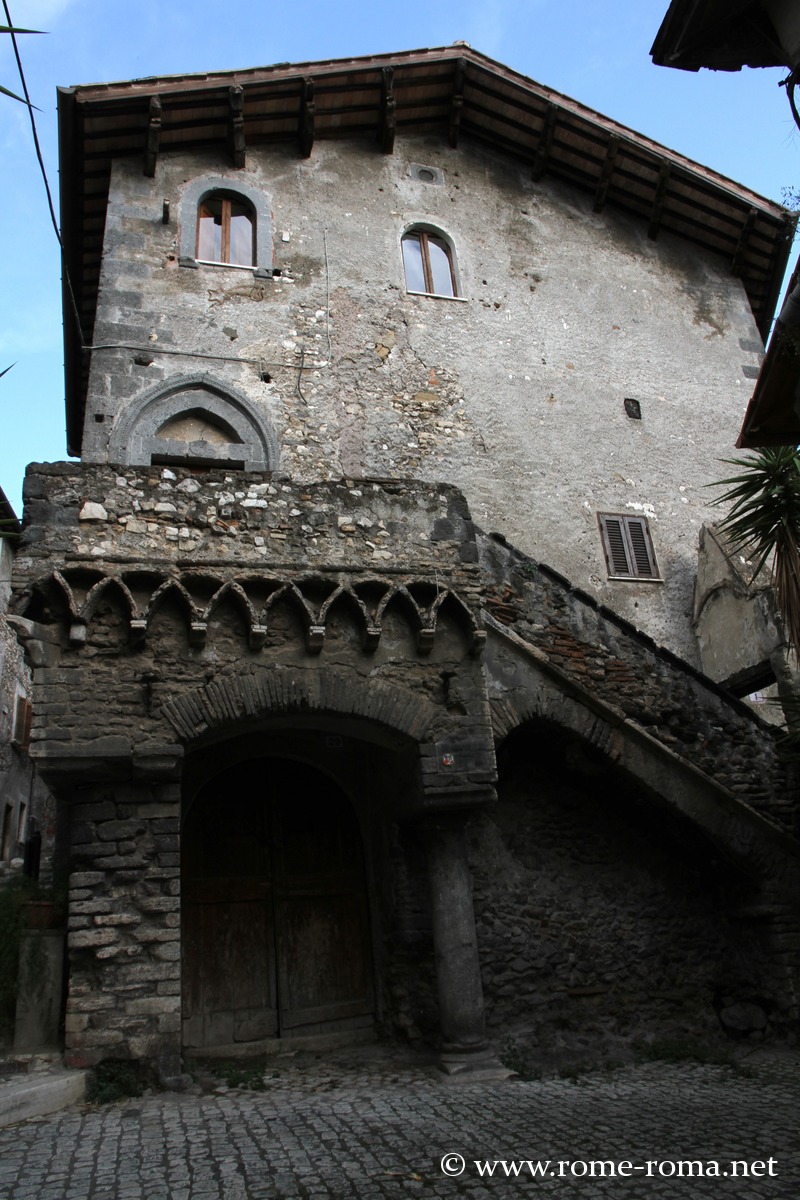
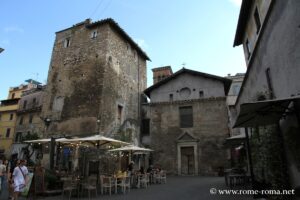
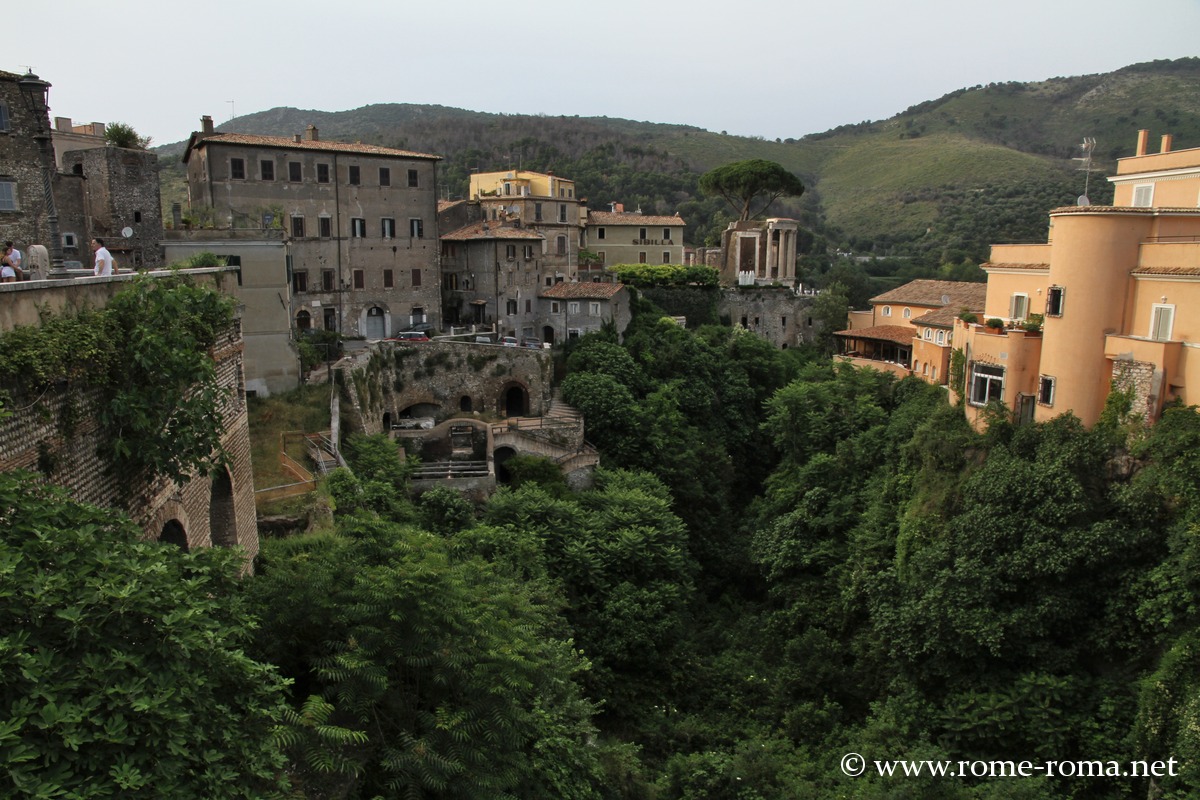
Temple of Vesta and Temple of the Sibyl
On the ancient acropolis of the city stand the temples of Vesta and the Sibyl. The Temple of Vesta lies on the edge of the cliff and overlooks the valley of the Villa Gregoriana with its waterfalls.
This small circular temple dates back to the 1st century BC, probably dedicated to Vesta, the goddess of the hearth, or perhaps to Tiburnus, the hero who is said to have given his name to the city. It preserves 10 of its 18 Corinthian columns from the surrounding portico. A small apse was added inside during the Middle Ages.
Next to it, at the top of the acropolis, the Temple of the Sibyl is a rectangular building that retains two of the four Ionic columns of its façade. It was built around the 2nd century BC.
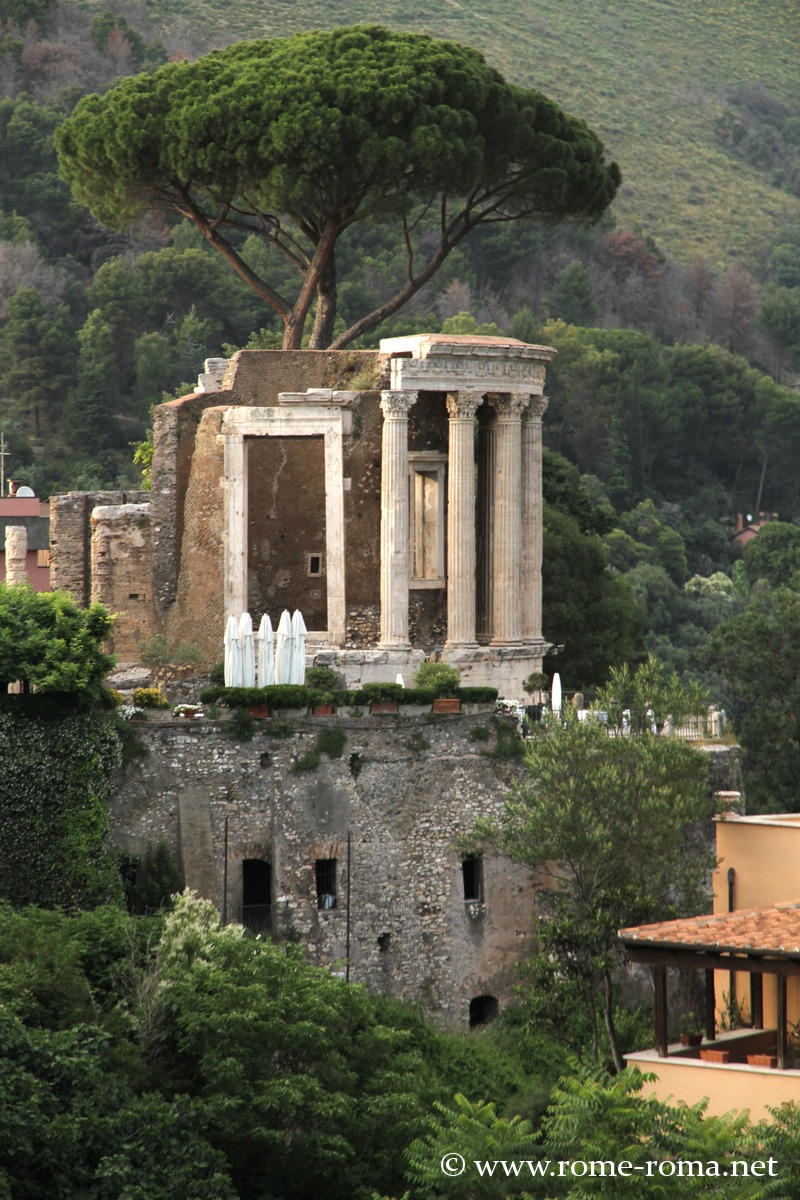
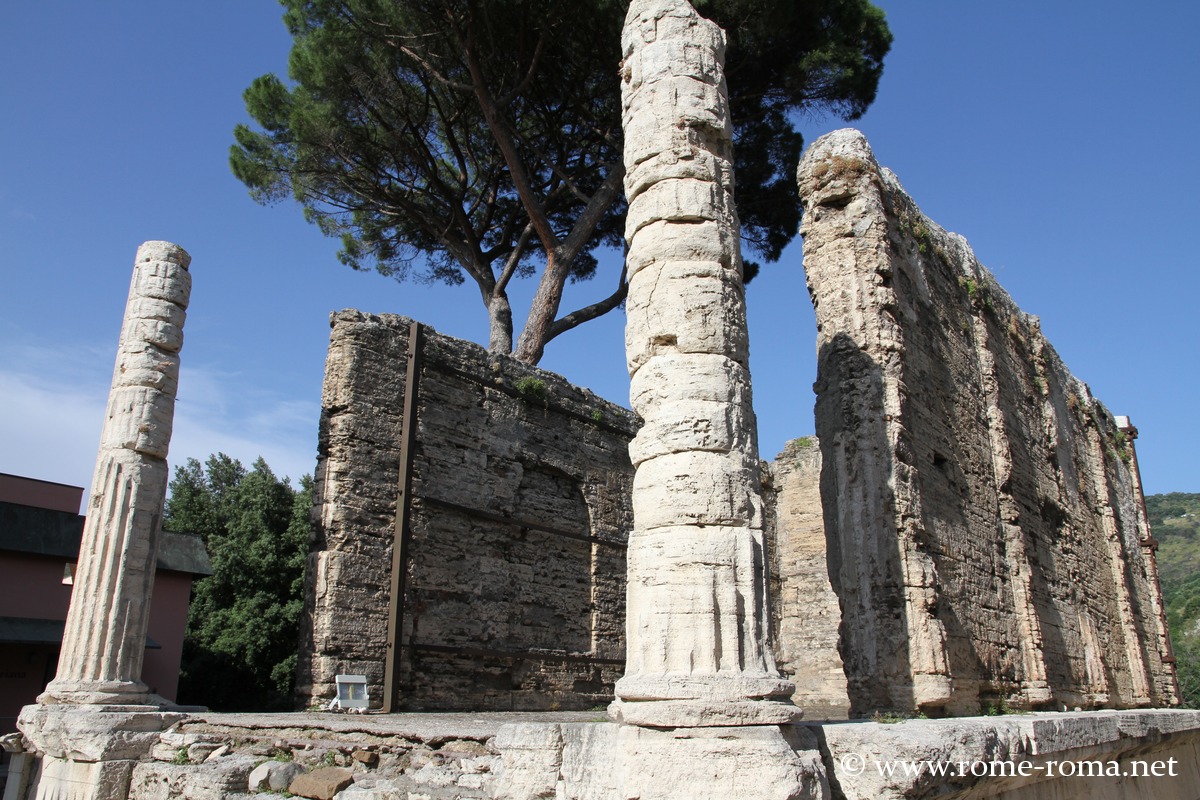
Sanctuary of Hercules Victor
Along with those of Gabii and Palestrina, the Sanctuary of Hercules Victor was one of the major sanctuaries of Latium at some 3 000 m², an important sacred architectural complex of the republican era. Built in the 2nd century BC, it was dedicated to the protective god of ancient Tibur.
Of large dimensions, with a square of 188 by 140 metres, it was built with a series of terraces overlooking the Aniene River, crossed by the via Tiburtina (the Via Tecta of the sanctuary).
It included a theatre built on the slope, a large square lined with porticoes, and the temple itself.
The site was abandoned in the early 6th century, when Tivoli was conquered by Totila, king of the Ostrogoths.
Cathedral of San Lorenzo
The Cathedral of San Lorenzo, or Duomo, of Tivoli dates back to the Middle Ages, featuring a beautiful Romanesque bell-tower some 45 metres high, and important artworks such as The Deposition, a 13th-century wooden sculpture, and a 12th-century Triptych of the Savior.
Other churches
The medieval Church of San Biagio of Tivoli (14th century) has been restored, with a Gothic-style interior. The single-nave interior houses precious works.
The Church of San Pietro alla Carità, restored after the last war, has a brick façade and a superb bell-tower, a Cosmatesque floor, and 14th-century artworks.
The Church of San Silvestro, built in the 11th–12th centuries, has a Romanesque façade, an interior divided into three naves by marble columns, with some 12th-century elements in the choir.
The Church of Santa Maria Maggiore, on Piazza Trento, is distinguished by its splendid façade and pretty brick bell-tower, a Cosmatesque pavement from the 13th century, and the Tomb of Ippolito II d’Este.
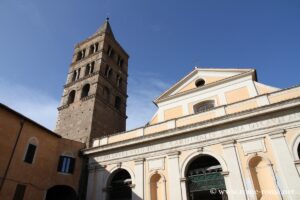
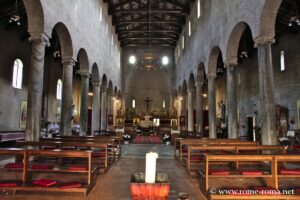

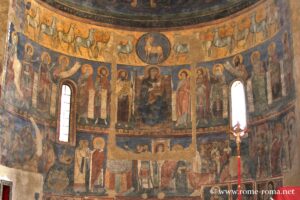
Rocca Pia and the Amphitheatre of Bleso
The Rocca Pia is a fortress located in the southern part of the historic center. It was built in 1461 by order of Pope Pius II Piccolomini. It consists of four massive circular towers of varying sizes, with the tallest reaching more than 36 meters in height.
Behind the Rocca Pia, the Amphitheatre of Bleso is a Roman structure from the 2nd century that could accommodate up to 2,000 spectators. Few remains are preserved today, as many of its stones were reused to build the Rocca.
Informations
Links about Tivoli
|
Articles about Tivoli
- Hadrian’s Villa : the imperial villa in Tivoli near Rome
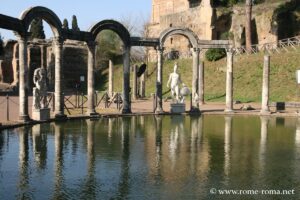 The archaeological site of Hadrian’s Villa (Villa Adriana in Italian) is one of the largest and most impressive architectural complexes ...
The archaeological site of Hadrian’s Villa (Villa Adriana in Italian) is one of the largest and most impressive architectural complexes ... - Villa Gregoriana Park
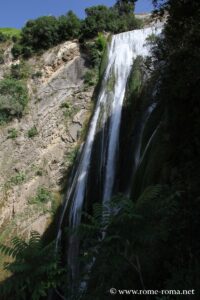 The Villa Gregoriana is a park located in Tivoli, at the foot of the historic town and the ancient acropolis, ...
The Villa Gregoriana is a park located in Tivoli, at the foot of the historic town and the ancient acropolis, ... - Villa d’Este in Tivoli: water show of the Renaissance
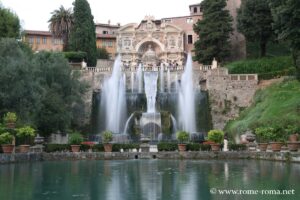 The Villa d’Este in Tivoli, located about 30 kilometers from Rome, is a jewel of the Italian Renaissance listed as ...
The Villa d’Este in Tivoli, located about 30 kilometers from Rome, is a jewel of the Italian Renaissance listed as ...
Map and address
Address : Tivoli, RomeIf you see this after your page is loaded completely, leafletJS files are missing.

